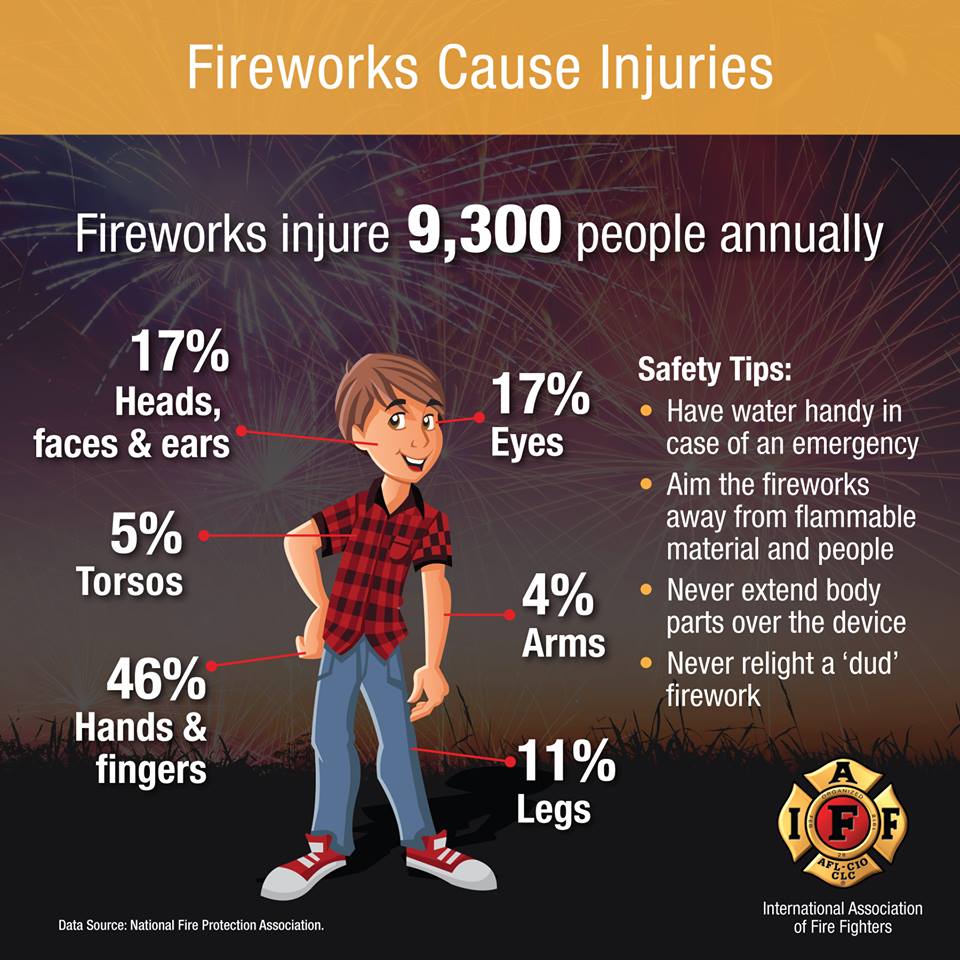As the July 4th holiday approaches, the nighttime skies around the U.S. begin to light-up with amateur fireworks – a kind of opening act for the professional exhibitions to come. What the pretty lights hide is that these do-it-yourself shows are truly hazardous, sending as many as 10,000 people a year to emergency rooms. The vast majority of these admissions take place during the months of June and July.

Fireworks Eye Safety
Inherent Dangers – Painful Injuries
Amateur fireworks are inherently dangerous – the simple act of using them creates hazards for both users and those nearby. Some findings from a 2014 Consumer Product Safety Commission report make this point again and again:
— Fireworks malfunctions – tip-overs, errant flight paths, early ignitions – account for an estimated 26% of injuries. (In one possible malfunction, the report cites a 14 year-old who suffered severe head trauma when a launch tube exploded. He died after nine days in the hospital.)
— Another 13% of injuries had as their root cause that the victim was too close.
— So called “safe” fireworks like sparklers and bottle rockets accounted for 15% of injuries.
— Thirty-six percent of those injured by fireworks were under the age of 14.
— Burns accounted for 54% of fireworks injuries.
— Nineteen present of injuries were to the head, face and ear. Another 19% percent were to the eyes.
This litany of accidents – often involving young people and so-called “safe” fireworks – underlines the hazards presented by the home use of fireworks.
Eye Injuries – from Bad to Worse
Fireworks mishaps can inflict burns, trauma or both to the eyes of its victims. Burns to the cornea can be particularly devastating as the powder used in fireworks often consists of an oxidizer and metallic fuel. That means physicians may find themselves treating a burn complicated by blunt force trauma, chemical exposure and metallic particles in the wound.
Fireworks eye injuries can be caused by more than explosions and catastrophic misfires. Stray sparks, ash, and burning pieces of cardboard and paper from fireworks have all been the direct cause of various degrees of injury.
Any of these eye injuries can put the victim’s vision at risk, and reports of long term impairment after injury are common.
Common Sense Fireworks Safety
Those still wanting a “do-it-yourself” fireworks display need to take some simple, but critical precautions. Children should never be allowed to play with or near any kind of fireworks, including sparklers. Those lighting fireworks should abstain from alcohol until after the show and practice basic fireworks eye safety by wearing safety glasses with side shields. Never put any part of your body over a firework, back-up quickly to a safe distance after lighting the fuse, and never try to re-light or pick-up a firework that has not ignited. You’ll find a complete list of safety precautions on the Consumer Product Safety Commission’s website.
Do you want to completely protect yourself, family and friends from the risks associated with amateur fireworks? The solution is simple. Don’t use them. Instead, go to a professional fireworks exhibition, let the experts do their job and enjoy a far bigger and better show.